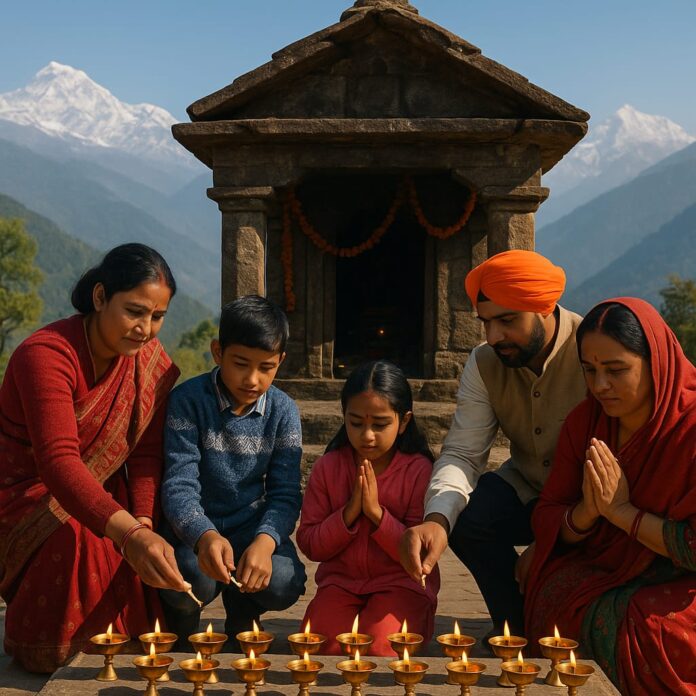On a quiet morning at a hill shrine, a Nepali family from Gorkha and an Indian family from Uttarakhand light lamps side by side. They speak different languages at home, but they share the same tune for the prayer and the same reverence for the mountain. This small, everyday scene says more about Himalayan stability than a pile of policy papers.
India and Nepal are bound first by people, then by policy. The long, open border allows markets to breathe and families to stay close. Pilgrims cross for temples and festivals. Students move for schools and coaching while traders carry vegetables one way and medicines the other.
The military relationship builds on this social base. For more than a century, Nepali soldiers have served with honour in Gorkha regiments of the Indian Army. The tradition is not just about jobs, it is about shared standards, discipline and respect earned in the toughest terrain. The reciprocal practice of conferring honourary ranks on each other’s Army chiefs is symbolic, but powerful. It signals that trust runs institution to institution and not just leader to leader. Joint exercises, especially at altitude, help both armies refine mountain skills, practice disaster relief and keep communication smooth. In the Himalayas, where a small misunderstanding can escalate quickly, familiarity is safety.
Disaster response is another strong bond. Earthquakes, landslides, and cloudbursts do not stop at borders. When a tremor hits, it is the neighbour who arrives first with helicopters, engineers, field hospitals and fuel. Over the past decade, the two countries have grown better at planning for these moments. Pre-positioning supplies, sharing weather alerts and drilling together so that chains of command are clear. This is not glamorous work but it saves lives and prevents panic. The very panic that outside actors sometimes use to insert themselves and set the narrative that suits them.
Economics reinforces the security logic. Power lines linking Nepal’s hydropower to India’s grid turn monsoon rivers into shared assets. Cross-border highways and rail projects, when done well, cut travel times for farmers and small factories. The principle is simple–the more both sides gain from routine trade, the less space there is for anyone to profit from disruption. Every kilowatt sold across the border, every truck that clears customs without a fuss, is a small vote for stability.
Culture, too, is a form of defence. Shared festivals, music and food habits are trust-building tools that work even when politics is noisy. When people feel they know each other, they are less likely to fall for stories that paint the neighbour as a threat.
None of this means the relationship is free of friction. There are border questions to manage, trade irritants to iron out and public sensitivities to respect. But the right lesson from these bumps is not to look far away for fixes. It is to double down on habits that keep disputes small–meet early, speak plainly, publish joint facts and keep the lines open between officials, soldiers and citizens.
This matter because instability anywhere in the Indo-Pacific can become an excuse for greater outside involvement. More advisors, more conditional money, more say from distant capitals in local choices. Nepal and India cannot stop global competition, they can however reduce the opportunities for it to play out on their ridges and rivers. The best way is steady cooperation that delivers visible benefits to ordinary people.
For steadiness to take shape, first, keeping joint military training regular and practical is necessary which includes search and rescue, high-altitude logistics and air evacuation. Second, making disaster drills routine and public is another way. This will help the mountain communities in knowing where to go and whom to call. Third, expansion of cross-border power trade and investment in strong transmission lines. Electricity that earns income for Nepal and lowers costs for India is a win that politics cannot easily argue with. Fourth, simplifying border trade for small businesses is a necessity. Digital customs, single-window clearances, and predictable hours. When shopkeepers and truckers have a smooth day, rumours lose value.
Fifth, widen student and youth exchanges. A year studying across the border, an internship in a shared industry cluster, a joint mountain ecology project—these plant roots that outlast political cycles. Sixth, celebrate the cultural overlap openly. Joint festival calendars, tourism circuits that link shrines and trekking routes and community radio programmes in border districts. Pride in shared heritage makes it harder for anyone to seed mistrust.
Above everything, communicating the partnership better is a must. A Nepal which is confident in its economy, capable in its institutions, and connected to its neighbour will ensure that the Himalayas remain calm. This will then leave little room for foreign manipulation because there is less fear to exploit and fewer gaps to fill.

